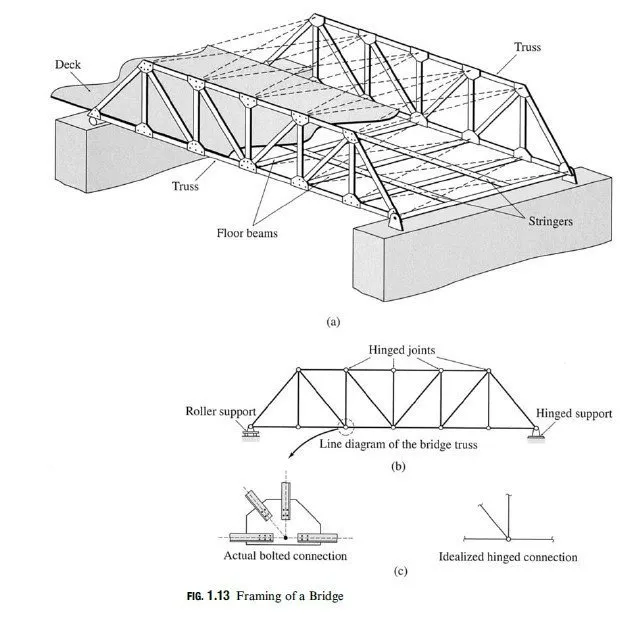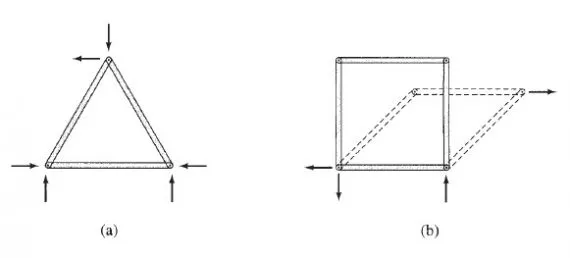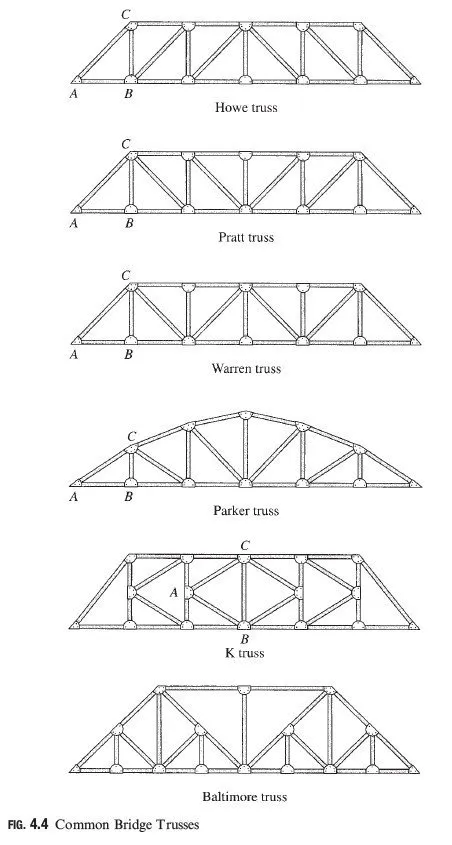The forces and couples to which a structure may be subjected can be classified into two types, external forces and internal forces.
External Forces
External forces are the actions of other bodies on the structure under consideration. For the purposes of analysis, it is usually convenient to further classify these forces as applied forces and reaction forces. Applied forces, usually referred to as loads (e.g., live loads and wind loads), have a tendency to move the structure and are usually known in the analysis. Reaction forces, or reactions, are the forces exerted by supports on the structure and have a tendency to prevent its motion and keep it in equilibrium. The reactions are usually among the unknowns to be determined by the analysis. The state of equilibrium or motion of the structure as a whole is governed solely by the external forces acting on it.
Internal Forces
Internal forces are the forces and couples exerted on a member or portion of the structure by the rest of the structure. These forces develop within the structure and hold the various portions of it together. The internal forces always occur in equal but opposite pairs, because each member or portion exerts back on the rest of the structure the same forces acting upon it but in opposite directions, according to Newtons third law. Because the internal forces cancel each other, they do not appear in the equations of equilibrium of the entire structure. The internal forces are also among the unknowns in the analysis and are determined by applying the equations of equilibrium to the individual members or portions of the structure.


